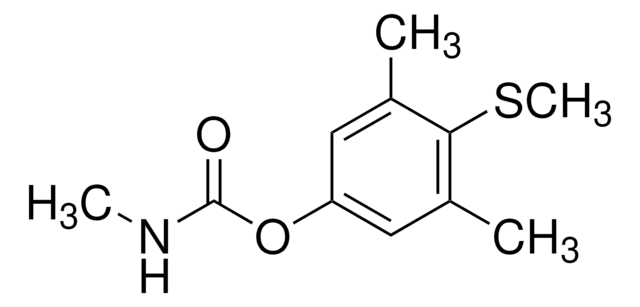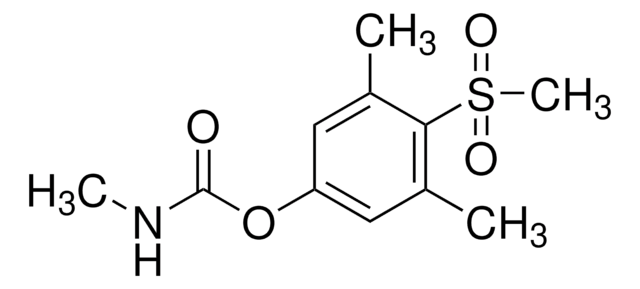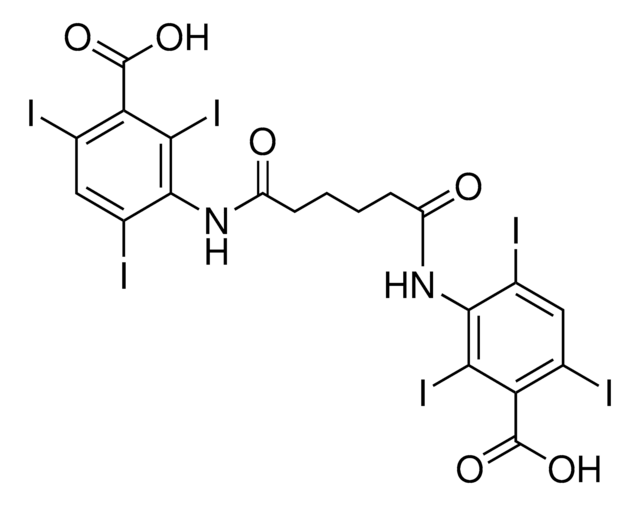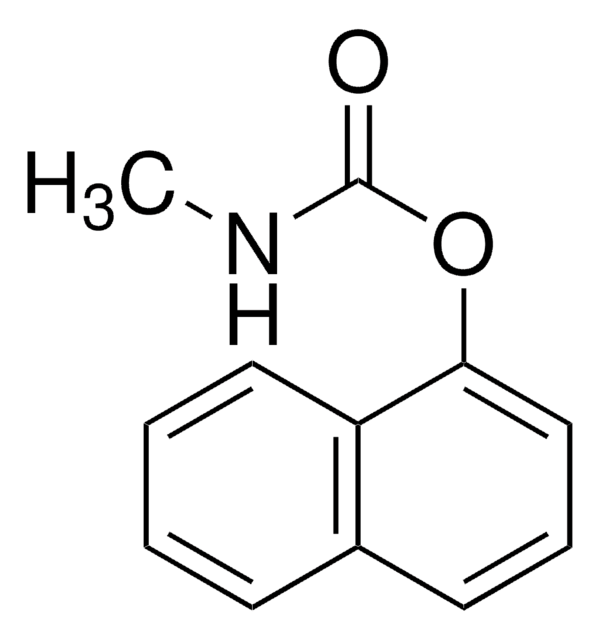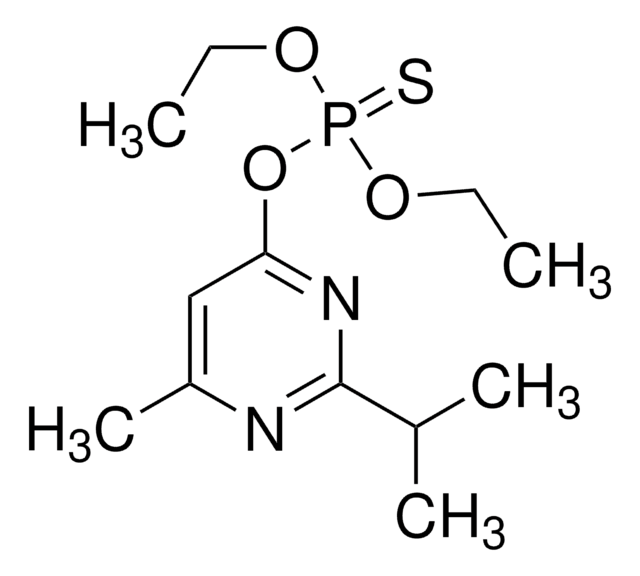31097
1-Naphthol
PESTANAL®, analytical standard
Sinonimo/i:
α-Naphthol, 1-Hydroxynaphthalene
About This Item
Prodotti consigliati
Grado
analytical standard
Livello qualitativo
Densità del vapore
4.5 (120 °C, vs air)
Tensione di vapore
1 mmHg ( 94 °C)
Nome Commerciale
PESTANAL®
Saggio
≥98.0% (GC)
Temp. autoaccensione
1007 °F
Durata
limited shelf life, expiry date on the label
Limite di esplosione
5 %
tecniche
HPLC: suitable
gas chromatography (GC): suitable
P. eboll.
278-280 °C (lit.)
Punto di fusione
94-96 °C (lit.)
applicazioni
forensics and toxicology
pharmaceutical (small molecule)
Formato
neat
Stringa SMILE
Oc1cccc2ccccc12
InChI
1S/C10H8O/c11-10-7-3-5-8-4-1-2-6-9(8)10/h1-7,11H
KJCVRFUGPWSIIH-UHFFFAOYSA-N
Cerchi prodotti simili? Visita Guida al confronto tra prodotti
Descrizione generale
Applicazioni
- In human urine by a rapid and automated method based on coupled-column liquid chromatography (LC-LC) with fluorescence detection.
- In canned fruit juices by reversed-phase high performance liquid chromatography with diode-array detection.
Note legali
Non trovi il prodotto giusto?
Prova il nostro Motore di ricerca dei prodotti.
Avvertenze
Danger
Indicazioni di pericolo
Classi di pericolo
Acute Tox. 3 Dermal - Acute Tox. 4 Oral - Aquatic Acute 1 - Aquatic Chronic 3 - Eye Dam. 1 - Skin Irrit. 2 - Skin Sens. 1A - STOT SE 2 Oral - STOT SE 3
Organi bersaglio
Kidney, Respiratory system
Codice della classe di stoccaggio
6.1C - Combustible acute toxic Cat.3 / toxic compounds or compounds which causing chronic effects
Classe di pericolosità dell'acqua (WGK)
WGK 1
Punto d’infiammabilità (°F)
257.0 °F - closed cup
Punto d’infiammabilità (°C)
125 °C - closed cup
Dispositivi di protezione individuale
dust mask type N95 (US), Eyeshields, Faceshields, Gloves
Scegli una delle versioni più recenti:
Possiedi già questo prodotto?
I documenti relativi ai prodotti acquistati recentemente sono disponibili nell’Archivio dei documenti.
I clienti hanno visto anche
Il team dei nostri ricercatori vanta grande esperienza in tutte le aree della ricerca quali Life Science, scienza dei materiali, sintesi chimica, cromatografia, discipline analitiche, ecc..
Contatta l'Assistenza Tecnica.
